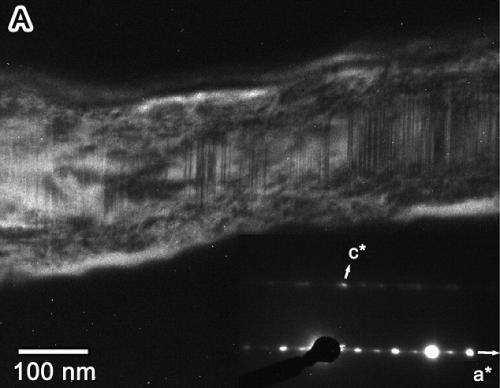Credit: Earth and Planetary Science Letters, Volume 410, 15 January 2015, Pages 1–11.
(Phys.org)—A combined team of researchers from Japan and the U.S. has found particles of comet dust in ice extracted from the Antarctic—the first time comet dust particles have been found on the surface of the Earth. In their paper published in the journal Earth and Planetary Science Letters, the researchers describe how they found the dust particles and what they've learned by analyzing them.
Finding samples of material from a comet is no easy feat, sending probes to them and back is a rare occurrence. Because of that, scientists have taken to collecting samples floating about high in the Earth's the atmosphere—an approach that has its limitations as it involves using a sticky sheet that nets few of the dust particles and which leaves oils on the samples which are further dirtied by solvents meant to clean them. In this latest effort, the researchers drilled down approximately 58 feet into the Antarctic snow and ice at a place called Tottuki Point. When the ice was melted back in their lab, the researchers found, among other things, extremely tiny (10 to just over 60 micrometers) dust particles which they initially believed to be meteorite dust. Subsequent analysis however showed that the particles (known as chondritic porous interplanetary dust particles) were a near perfect match to comet samples collected by NASA with its Stardust probe project and samples found in the atmosphere.
Back in 2010 a team from France studying Antarctic snow reported finding what they believed to be comet particles, but this new finding is the first to report finding comet dust on the surface of the Earth. Prior to the finding, scientists had believed that tiny dust particles would never survive the trip through the atmosphere, much less the harsh conditions once they landed.
The finding is exciting because it will mean scientists will be able to get their hands on more samples than they could with atmospheric collection. The first ice chunks already have given up more than 40 of the dust particles. Space scientists are eager to learn more about comets as they are believed to represent some of the oldest objects out in space—learning more about them should reveal more about the origins of our solar system, and perhaps whether they are the seeders of life on our planet, as some have come to believe.
More information: Cometary dust in Antarctic ice and snow: Past and present chondritic porous micrometeorites preserved on the Earth's surface, Earth and Planetary Science Letters, Volume 410, 15 January 2015, Pages 1–11. www.sciencedirect.com/science/ … ii/S0012821X14007031
Abstract
Chondritic porous interplanetary dust particles (CP IDPs) collected in the stratosphere are regarded as possibly being cometary dust, and are therefore the most primitive solar system material that is currently available for analysis in laboratories. In this paper we report the discovery of more than 40 chondritic porous micrometeorites (CP MMs) in the surface snow and blue ice of Antarctica, which are indistinguishable from CP IDPs. The CP MMs are botryoidal aggregates, composed mainly of sub-micrometer-sized constituents. They contain two components that characterize them as CP IDPs: enstatite whiskers and GEMS (glass with embedded metal and sulfides). Enstatite whiskers appear as <2-μm-long acicular objects that are attached on, or protrude from the surface, and when included in the interior of the CP MMs are composed of a unit-cell scale mixture of clino- and ortho-enstatite, and elongated along the [100] direction. GEMS appear as 100–500 nm spheroidal objects containing <50 nm Fe–Ni metal and Fe sulfide. The CP MMs also contain low-iron–manganese-enriched (LIME) and low-iron–chromium-enriched (LICE) ferromagnesian silicates, kosmochlor (NaCrSi2O6)-rich high-Ca pyroxene, roedderite (K, Na)2Mg5Si12O30, and carbonaceous nanoglobules. These components have previously been discovered in primitive solar system materials such as the CP IDPs, matrices of primitive chondrites, phyllosilicate-rich MMs, ultracarbonaceous MMs, and cometary particles recovered from the 81P/Wild 2 comet. The most outstanding feature of these CP MMs is the presence of kosmochlor-rich high-Ca pyroxene and roedderite, which suggest that they have building blocks in common with CP IDPs and cometary dust particles and therefore suggest a possible cometary origin of both CP MMs and CP IDPs. It is therefore considered that CP MMs are CP IDPs that have fallen to Earth and have survived the terrestrial environment.
Journal information: Earth and Planetary Science Letters
© 2014 Phys.org
























